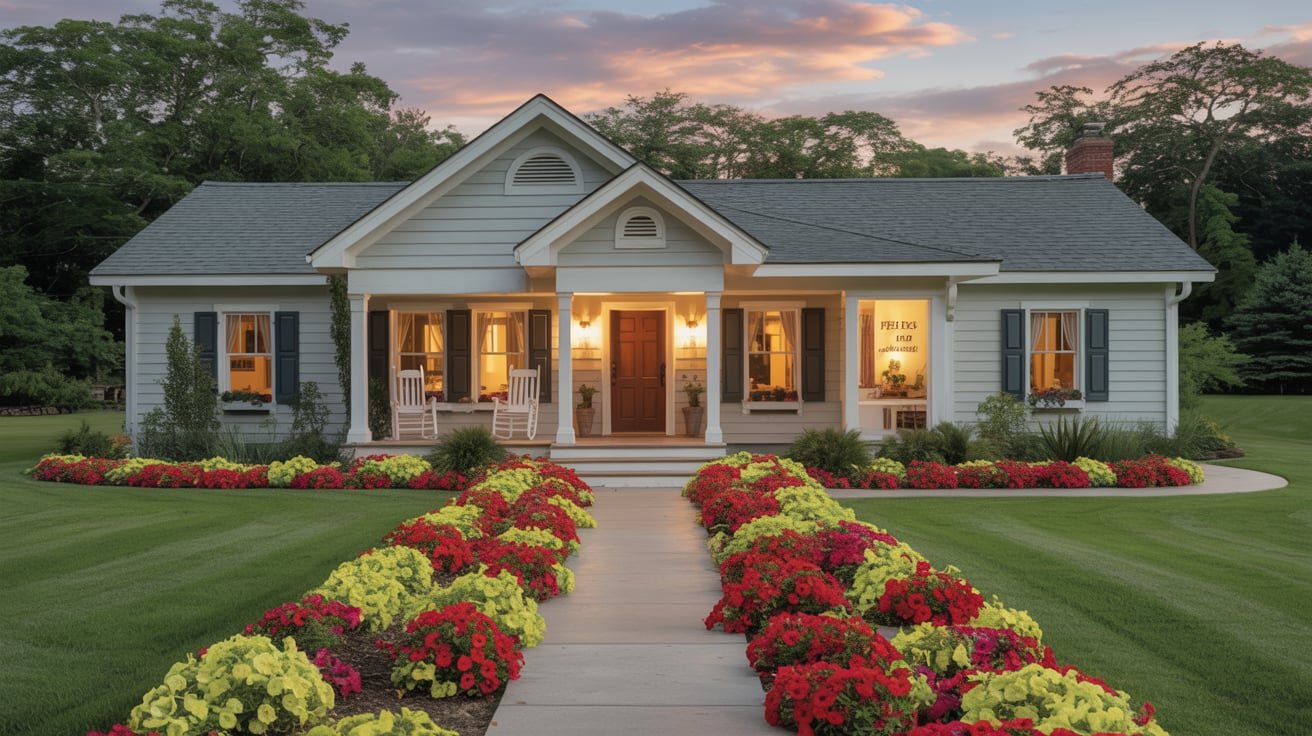Biophilic Design Bathroom Sink Ideas Natural & Eco-Friendly
Published: 28 Feb 2025
Introduction
Biophilic design operates successfully in interior spaces because it works to develop amicable places which restore self while responding sensitively to environmental conditions. Bathrooms currently demonstrate significant growth of biophilic principles in their designs. Sinks get designed using sustainable materials which fulfill both biophilic principles and design requirements. The design method works to establish sustainable areas that serve the health needs of their home users.
This article aims to assist you with biophilic design bathroom sink ideas that are eco-friendly and natural in appearance. If you are designing a large bathroom or a small one, including nature-friendly designs in your sink is sure to improve the look and feel of your current bathroom.
What is Biophilic Design in Bathroom Sinks?
The world of interior design is ever-evolving and biophilia is one of the trends that is capturing the hearts of many when aiming to create a certain design. It encourages the use of natural materials and in bathrooms for sinks, its application is fairly simple as it incorporates the use of natural textures as well as organic materials alongside eco-friendly solutions to promote well-being of the user.

Biophilic design is based on the idea that human beings are hardwired to connect with the rest of nature. It advocates the use of natural elements which helps promote relaxation while creating useful and pleasing spaces. And in designing bathroom sinks, biophilic design focuses on the following:
Key Aspects of Biophilic Bathroom Sinks:
- Natural Materials: Incorporation of wood, stone or clay in the materials used to make the bathroom sink.
- Sustainable Solutions: Use of local and eco-friendly materials.
- Relation with Nature: Application of decorative items that relate to the natural environment.
All the ideas proposed above, when incorporated in the design of a bathroom sink, would enhance the feeling of being centered and experienced in their well-being space.
Advantages of Biophilic Design Bathroom Sinks
There are several gains of using this biophilic design in remodeling your bathroom sink, more so as to retain a modern ecological appeal. These include:
Key Benefits:
- Sustainable Materials: Biophilic design works towards environmental sustainability. Constructing bathroom designs with bamboo or stone that is recycled is known to reduce the carbon footprint of a particular room while at the same time, aiding waste management initiatives.
- Wellness Booster: Exposure to nature elements has been proven to enhance creativity, disrupt stress and elevate the ambient mood, which in turn nurtures middle-cycle bathroom spaces.
- Aesthetic Appeal: Biophilic sinks encapsulate and enhance the intrinsic beauty that natural materials have such as the texture of stone or the feel of wood, giving an overall expensive look to the sink.
Having a bathroom sink that combines biophilic design with other forms of designs ensures that the space is visually pleasing while ensuring nature is taken care of.

Biophilic Bathroom Sinks Using Natural Materials
The materials selection for a biophilic bathroom sink needs careful consideration because they determine how the final vision appears. To reach the correct decision you must establish your priority between appearance and environmentally sustainable materials.
Stone Sink
Using stone which includes marble, granite and river rock materials when crafting your sink gives a vintage and classy look. In addition to that, you can also rest easy as these materials aren’t harmful to the environment.
Why Stone Sink is a Better Option?
- Due to its non-porous nature stones resist bacterial or mold development.
- Ambient weather conditions and regular handling do not affect stone because of its durability.
Moreover, wooden sinks will be a great substitute for stone during biophilic designs.
Idea | Materials | Benefits |
Stone Sink with Wood Base | Natural stone (e.g., marble, granite), reclaimed wood | Sustainable, durable, adds earthy textures |
Recycled Glass Sink | Recycled glass, eco-friendly sealants | Reduces waste, unique design, easy to clean |
Bamboo Sink | Bamboo, natural resin | Fast-growing, lightweight, water-resistant |
Wooden Sinks
Made from naturally sourced bamboo, wooden sinks are perfect for any bathroom turn and give a spa-like aesthetic to the bathroom. Furthermore, the warm natural feel they provide puts the user at ease.
Advantages of Wooden Sinks:
- Wood adds a natural touch or character to the bathroom appeal.
- Bamboo as a material does qualify as a renewable resource since it grows rapidly.
- A handcrafted look along with unparalleled design is something wooden sinks offer.
Clay or Ceramic Sinks:
Handcrafted ceramic or clay sinks are also made using raw materials. These sinks are functionally diverse as they can be designed in different shapes and styles. For a biophilic look, go for a clay sink that is earthy in color.

Advantages of Clay or Ceramic Sinks:
- Comes in an array of textures and finishes.
- Environmentally friendly alternatives made out of natural non-toxic materials.
- Long-lasting and do not require extensive efforts to clean.
Eco-Friendly Features of a Bathroom Sink
Eco-friendly approaches to designing a bathroom sink extend beyond just the materials used. Here are some eco-friendly features to incorporate into a biophilic bathroom sink:
Water Saving Basin Taps:
The incorporation of low-flow basin taps will ensure that water usage is reduced without compromising on performance. Low-flow taps require much lesser water than a normal faucet, hence assisting in lowering utility bills.
Water Saving Basin Taps Benefits:
- Water savings and wastage reduction.
- Water pressure is controlled while a smaller amount of water is used.
- Assists in environmental sustainability.
Reusing Some Sink Building Materials:
You may try to source sinks built using recycled materials such as glass, metals and stones. Such materials don’t only aid in shifting the waste material away from landfills but promote sinks that are eco-friendly.
Advantages of Using Recycled Materials:
- Aid in the reduction of new resources and have waste materials shifted from the landfills.
- Enable savings on new resources by promoting eco-friendly manufacturing.
- Are able to furnish new designs and textures that replace the need for traditional materials.

Environmentally Friendly Finishes and Sealers
Use sinks made with environmentally friendly finishes and sealers. Most finishes used are made with several dangerous chemicals, but there are greener alternatives that do not harm the environment or your well-being.
Advantages of Non-Toxic Finishes:
- Suitable and safe for humans and pets alike.
- Do not contain volatile organic compounds (VOCs) that impact the indoor air quality adversely.
- Will support and increase the chances of creating and living in a green home.
Most Modern Biophilic Sink Designs
Of late, biophilic bathroom sinks have donned the market and made a name for themselves with regards to their looks and eco-friendliness. Below are some of the designs that need to be included into the list:

Natural Stone Basin
The stone basin is not only stunning but its texture and colors are unique, making it stand out. The stone is raw and has a natural feel to it which provides users with nature. Stone does provide your bathroom with a sense of class.
Design Ideas:
- Make stone vanity sinks and ladle wooden counters or metal accents for an organic and contemporary appeal.
- To make the spa theme, a basin which is round and made of stone will do wonders.
Wooden Vanity Sink
Storage and looks are both catered to well with this sink. A wooden vanity sink provides sufficient storage and displays the lovely wood appeal well. For biophilic designs and a cooldown effect, sustainable options such as bamboo work perfectly.
Design Ideas:
- A remade wood vanity can impressively spice up the bathroom, go for that option if you want an edge.
- Marry the vanity with a stone sink or clay basin and observe the breathtaking contrast that can arise.
Wall-Mounted Concrete Sink
In recent times, concrete sinks are emerging as popular within the modern bathroom spectrum. Concrete sinks have a clean-lined, simple design with industrial looks. As concrete is an eco-friendly material, wall-mounted concrete sinks remove the waste space under the sink, giving more space to put up decor.
Design Ideas:
- Pair natural wooden shelves or mirrors with concrete sink to soften the rough edges with some warmth.
- To highlight the design, use sleek and metallic faucets for a more modern and eco-friendly approach.

Enhancing the Eco-Friendliness of Biophilic Sink Accessories
Try enhancing your biophilic bathroom sink by including eco-minded accessories that go well with the natural materials as well as green features of your design. For example:
Towels and Mats Made from Bamboo
The bamboo towels together with bath mats stand as eco-friendly products which feature fast-drying capabilities and absorption ability with a soft texture. Bamboo grows quickly because it is an eco-friendly resource that needs few resources during its development.
Soap Dispensers Made of Recycled Glass
The bathroom should have recycled glass soap dispensers along with eco-friendly materials-based dispensers. These dispensers add aesthetic value to bathroom furniture and motivate users towards environmentally smart conduct in other areas of the house.
Rugs Made of Natural Fibers
The bathroom floor should incorporate rugs built from sustainable natural materials such as jute, sisal or cotton to create both texture and warmth. These fibers maintain an eco-friendly status since they break down easily in the environment thus providing bathroom material alternatives with sustainability in mind.
Tips for the Maintenance of Biophilic Bathroom Sinks
Since they cater to a more natural and eco-friendly approach, biophilic bathroom sinks do need some specific methods in order to keep them looking and working great. First, let’s look at the best methods for cleaning and maintaining them.
Stone Sinks
Stone sinks have exceptional durability although periodic maintenance becomes necessary to stop staining and preservation of the material. Using a soft soap solution with water for cleaning is the preferred technique but investors should refrain from applying harsh chemicals which might harm the stone surface. Annual reapplication of the seal keeps the sink intact indefinitely.

Wooden Sinks
If you are thinking of getting wooden sinks, remember to always wipe them down in order to prevent any sort of water damage that can ruin the sink. Try to keep the wood in as good condition as possible by applying a protective nitrate to the wood every now and then – this way you won’t have to do as much upkeep.
Ceramic and Clay Sinks
Ceramic and clay sinks don’t need as much care since they are durable and less prone to any damage, but just like everything else, they do have their cons. In order to keep the surface intact and avoid any chipping, try to not use incredibly harsh scrubbing tools or aggressive cleaners.
FAQs:
Can you explain what biophilic design means for a bathroom sink?
The approach of biophilic designs for bathroom sinks allows them to incorporate greener and more natural materials since it aims to make the end product more eco-friendly.
Are stone sinks eco-friendly?
Stone sinks support environmental sustainability because producers use renewable materials coupled with minimal energy usage during production.
Which methods would help me achieve more eco-friendliness in my bathroom sink setup?
Homeowners should choose faucets with low water flow to save water during use. When selecting sinks pick ones that have a long lifespan from sustainable recycled materials combined with eco-friendly sealants and final products.
What is the ideal material for a biophilic bathroom sink?
If you are planning on making a biophilic sink, then the ideal materials are clay, wood, ceramic or stone.
How can I maintain a wooden bathroom sink?
Clean the sink with gentle soap and water and apply protective layering to it to guard it against moisture damage.

- Be Respectful
- Stay Relevant
- Stay Positive
- True Feedback
- Encourage Discussion
- Avoid Spamming
- No Fake News
- Don't Copy-Paste
- No Personal Attacks

- Be Respectful
- Stay Relevant
- Stay Positive
- True Feedback
- Encourage Discussion
- Avoid Spamming
- No Fake News
- Don't Copy-Paste
- No Personal Attacks





